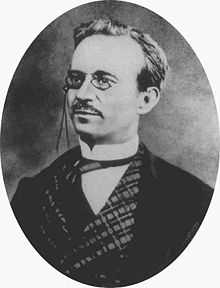Italian general election, 1861
Italian general election, 1861
_crowned.svg.png)
|
| 27 January - 3 February 1861 |
|
|
|

|
| Composition of the Parliament |
|
General elections were held in Italy on 27 January 1861, with a second round of voting on 3 February.[1] The newly elected Parliament first convened in Turin on 4 March 1861, where it declared the unification of the country as the Kingdom of Italy.[1]
The election was carried out according to the 1848 electoral law of the Kingdom of Sardinia, in which only literate men over the age of 25 and paying a certain level of taxation were allowed to vote.[1] Candidates were elected in single member constituencies, with a second round required in cases when no candidates received over 50% of the vote or the equivalent of one-third of the registered voters in the constituency.[2] The Pope demanded that Catholics did not take part in the elections.[2]
The race
The Historical Right was led by the former Prime Minister of the Kingdom of Sardinia, Camillo Benso, Count of Cavour, a long-time staresman and a leading figure in the movement toward Italian unification.
On the other hand, the bloc of the Historical Left was led by Urbano Rattazzi, a liberal politician who was between the founders of the Italian left-wing parliamentary group.
In opposition to the two main blocs there were a third party known as The Extreme, a far-left coalition, under the leadership of Agostino Bertani, an Italian revolutionary and a key figure of the Unification.
Only 418,696 men of a total population of around 22 million were entitled to vote.[3] Right-wing candidates emerged as the largest bloc in Parliament with around 43% of the 443 seats.[4] They were largely aristocrats representing rentiers from the north of the country, and held moderate political views including loyalty to the crown and low government spending.[5] The right-wing leader Camillo Benso di Cavour was elected as the first Prime Minister in the history of Italy.
Parties and leaders
Results
| Affiliation |
Votes |
% |
Seats |
|---|
|
Historical Right | | 46.1 | 342 |
|
Historical Left | | 20.4 | 62 |
|
The Extreme | | 2.3 | 14 |
|
Independent | | 3.9 | 23 |
|
Others | | 27.3 | – |
|
Invalid/blank votes | | – | – |
| Total | 239,583 | 100 | 443 |
| Registered voters/turnout | 418,696 | 57.2 | – |
| Source: Nohlen & Stöver |
References
- ↑ 1.0 1.1 1.2 Nohlen, D & Stöver, P (2010) Elections in Europe: A data handbook, p1047 ISBN 978-3-8329-5609-7
- ↑ 2.0 2.1 Nohlen & Stöver, p1039
- ↑ Nohlen & Stöver, p1049
- ↑ Nohlen & Stöver, p1082
- ↑ Nohlen & Stöver, p1028


